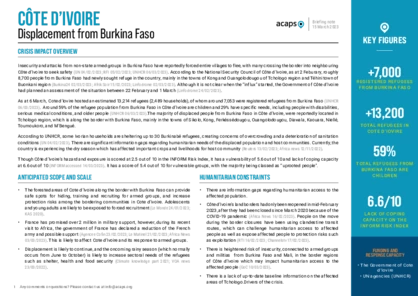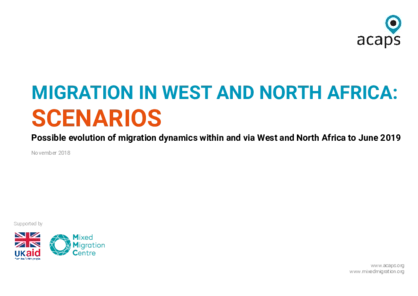Latest updates on country situation
08 September 2025
A land dispute between Brefor and Gonja communities in Ghana’s Savannah region escalated into violent clashes in late August 2025, killing at least 34 people and displacing nearly 50,000. The violence began in Gbenyiri village and spread to nearby areas, prompting a curfew and the deployment of over 700 security personnel. By 5 September, around 10,000 people had crossed into Côte d’Ivoire’s Bounkani region, where civic authorities report food shortages, overcrowding, and inadequate medical supplies. Most arrivals are women, children, and older people. Within Ghana, over 40,000 remain displaced across Savannah region, many in neighbouring villages with limited shelter or services. Some families have also attempted to cross into Burkina Faso. Given the region’s history of land-related conflict, protracted displacement and renewed violence remain possible. Although the situation has calmed, cross-border ethnic ties and the absence of a resolution raise the risk of reprisals and further unrest. (RFI 03/09/2025, ECHO 05/09/2025, Sada News 05/09/2025)
current crises
in
Côte d'Ivoire
These crises have been identified through the INFORM Severity Index, a tool for measuring and comparing the severity of humanitarian crises globally.
CIV002 - Displacement from Burkina Faso
Last updated 30/11/2025
Drivers
International Displacement
Crisis level
Country
Severity level
2.1 Medium
Access constraints
0.0
Analysis products
on
Côte d'Ivoire
15 March 2023
Côte d’Ivoire: Displacement from Burkina Faso
DOCUMENT / PDF / 366 KB
Insecurity and attacks from non-state armed groups in Burkina Faso have reportedly forced entire villages to flee, with many crossing the border into neighbouring Côte d’Ivoire to seek safety. According to the National Security Council of Côte d’Ivoire, as at 2 Feburary, roughly 8,700 people from Burkina Faso had newly sought refuge in the country.
Attached resources
30 November 2018
Migration in West and North Africa
DOCUMENT / PDF / 855 KB
These scenarios consider how migration dynamics within and via West and North Africa (including across the Mediterranean Sea) might evolve in the first half of 2019 and the potential humanitarian consequences. The aim is to support strategic planning, create awareness and promote preparedness activities for policymakers and other actors working on migration.



